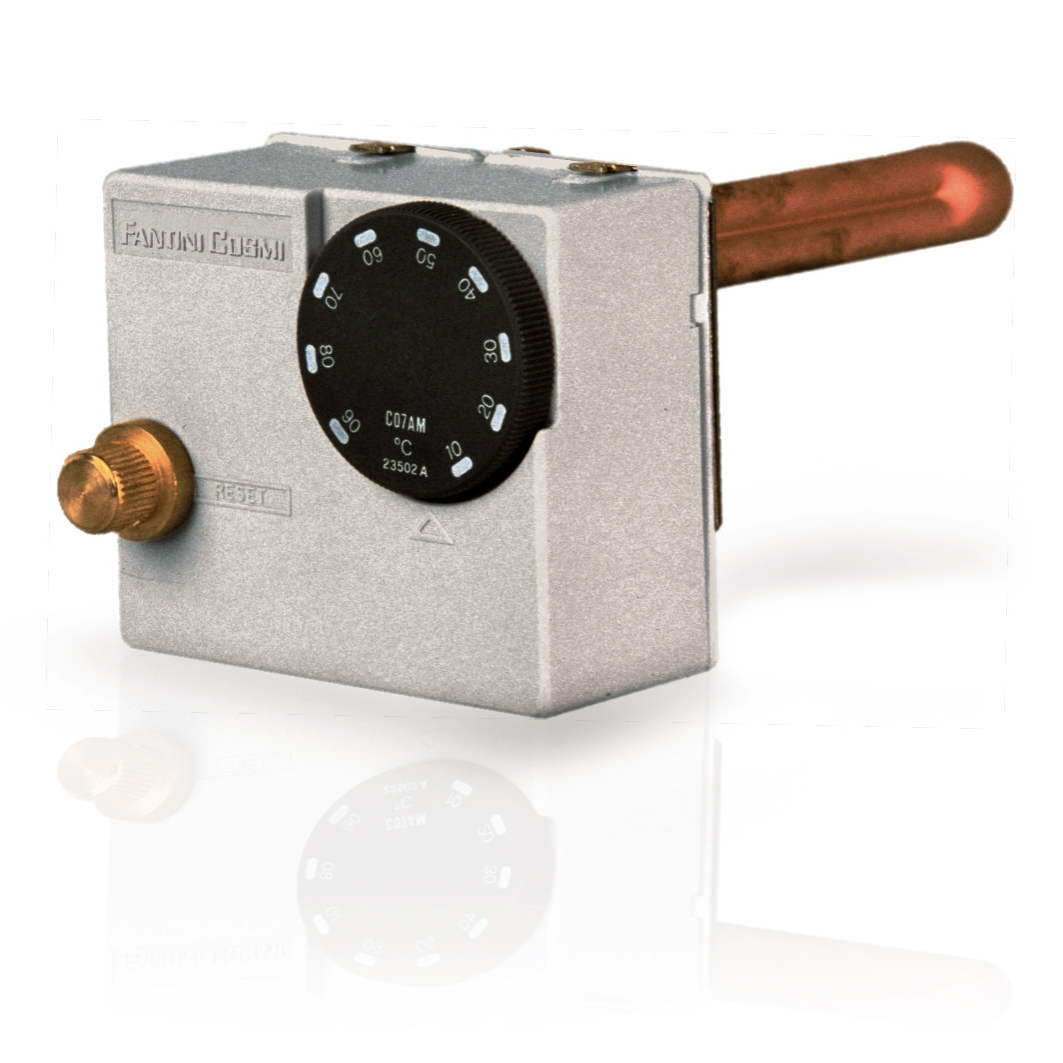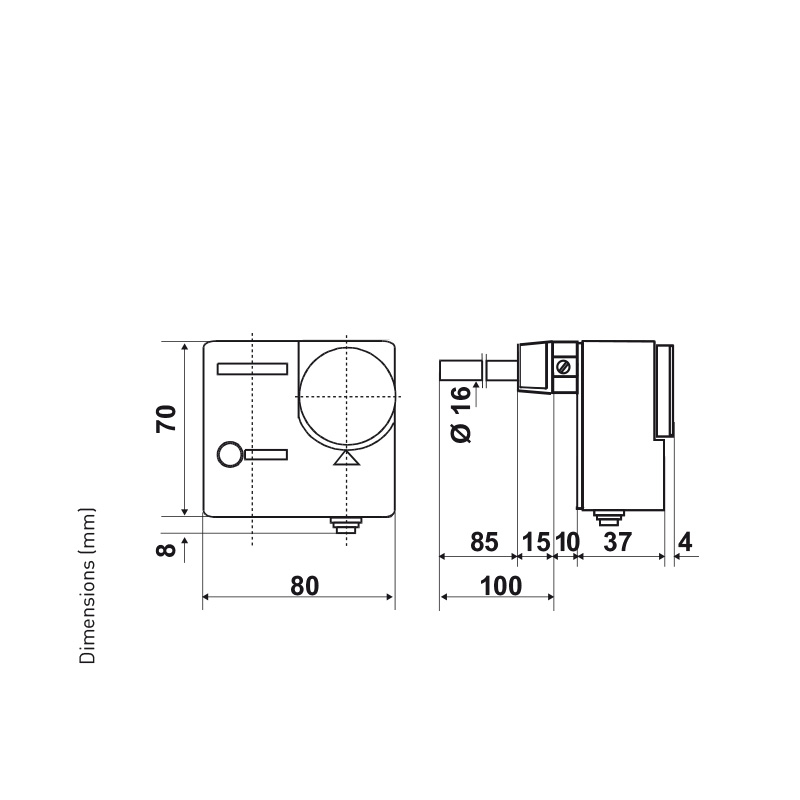Control and lockout immersion bithermostat
-
DESCRIPTION
General features0
Positive safety control and lockout immersion bithermostat for boilers and heating systems.
- Liquid expansion operation.
- Direct immersion mounting of the bulb via threaded sheath Gc1/ 2 ( included).
- The bi- thermostat is composed of a C03A and a C06AM in a single cover and one sheath
- Sensitive element with stainless steel diaphragm
- Copper sheath with Gc ½ PN10 connection
- Base, cover and knob in shock- proof self-extinguishing thermoplastic V0.
ACCESSORIES
- Code 303298LA: cable gland G1/2 for connection output in shock-proof self-extinguishing thermoplastic material V0.
- Code G31: copper sheath with length 100mm, Gc 1/2” PN10.
Electric features- Rated insulation voltage Ui 380V~
- Continuous duty rated current Ith 15A
-
ADVANTAGES
0
Positive safety control and lockout immersion bithermostat for boilers and heating systems.
Advantages -
TECHNICAL SPECIFICATION
CODE LOCKOUT ACTION TEMPERATURE RANGE LOCKOUT ACTION TOLERANCE * MAXIMUM BULB TEMPERATURE PROTECTION DEGREE C07A3M 100 °C 10 ÷ 90 °C + 0 - 6 °C 130 °C IP40 * Tolerance refers to only lockout thermostat -
HOMOLOGATION AND INSTALLATION
Homologation
- Compliance with standards EN 60947-5-1, EN 60730-1
- Compliance with Directive 2014/68 / EC (PED);
- ENEC certificates.
Installation and use- Direct immersion mounting of the bulb via threaded sheath GC 1/2 (included in the package).
- When the temperature increases are opening the contacts 1-2.
- Liquid expansion function.
- The thermostat controls the temperature in the values range from 10 to 90°C; if the system reaches the limit temperature, the lockout thermostat interrupts the electrical circuit and to reactivate it is necessary to act on the manual reset (after the temperature has dropped until ~ 25 ° C).
- In case of breakdown or failure of its sensing element, the thermostat interrupts the electrical circuit and is no longer possible to reactivate the system (is necessary to replace the thermostat).
- TECHNICAL LITERATURE
-
FAQS






